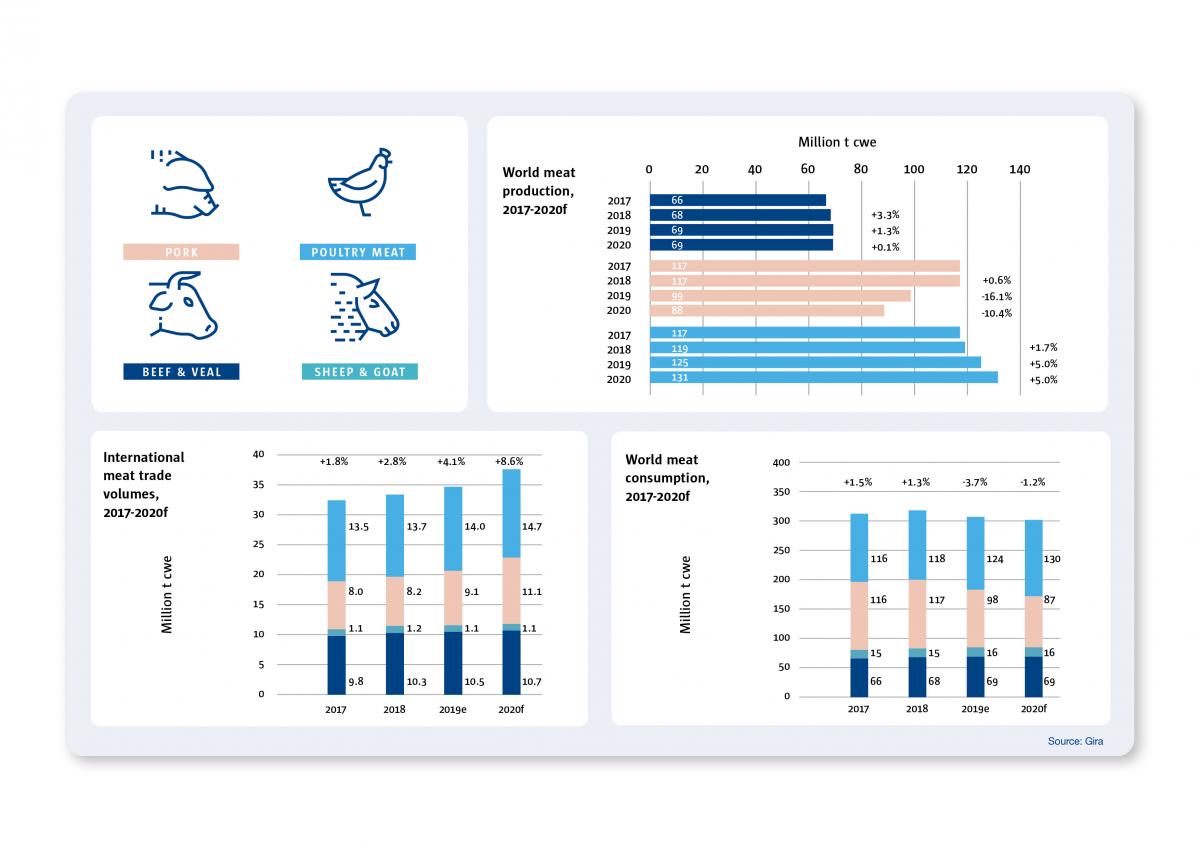The outbreaks of African swine fever in Asia have consequences for the global meat sector. For the first time in a long time, the global production and consumption of meat fell in 2019. Previously, a decrease in one type of meat was cushioned by an increase in the other types. Now, the impact of African swine fever in China is so great, that no other type of meat or producer can fill the existing gap. As a result, global trade is experiencing sharp growth with China as the driving force, pushing up prices.
Production
Before the outbreaks of African swine fever, the global production of meat was heading for oversupply. In the meantime, it has however become clear that in 2020 and the following years, African swine fever will rearrange the meat market. Poultry will benefit most from the situation, as will the exporting pork producers. Feed costs are under control and production is being increased. Ruminant production is under more pressure as a result of a combination of factors: climate issues and poor profitability at farm level prevent long-term investments.
Trade
China was the most important driver for the 4.1% growth in the global trade in meat for every type of meat. Pork rose sharply thanks to the higher Chinese demand. The same happened with poultry. Beef also grew thanks to the North and South American supply, supplemented by the further slaughtering of the herd in Australia. In 2020, trade will further expand for primarily pork and poultry. Trade in beef will also rise further, but less pronouncedly since the offer will not always be available, especially in Australia.
Consumption
Global consumption fell by almost 4% in 2019. This decrease can be entirely attributed to the reduced consumption of pork due to the insufficient supply in China and other Asian countries. In turn, beef experienced slight growth by 1.3% and poultry good growth by 4.9%. If China is not included, global consumption grew by 1.2%.
In comparison, fish consumption is on the winning hand. Historically, meat lost market share to fish in the group of animal proteins. However, in the last few years, meat has had a better compound annual growth rate (CAGR) than fish, due to the higher fish prices on some markets and the insufficient supply of fish (wild and aquaculture).

Belgium on the global meat market
Belgium is only a speck on the world map, but it certainly has a place in the global meat trade. As a global exporter of pork, Belgium is only preceded by 6 countries that export more and those are the major producers: Germany, the United States, Spain, Denmark, the Netherlands and Canada.
It does look as if Belgium has exported less in 2019 than in 2018. This can be explained by the 5% fall in the number of slaughters and the impact of African swine fever amongst wild boar. However, the Belgian approach has borne fruit; the outbreak is now under control. There is hope that the free status can soon be regained.
As far as beef is concerned, Belgium is in creditable 17th place in the global exports list. Here too, fewer animals were slaughtered in 2019 than the year before.